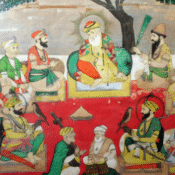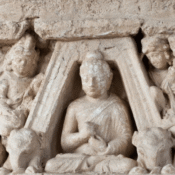
Skardu – Gateway to the Roof of the World
Skardu nestled in the breathtaking Gilgit-Baltistan region of northern Pakistan, is a land of snowcapped mountains, serene lakes, ancient forts, and unique Balti culture. Located at the confluence of the Indus and Shigar Rivers, Skardu lies at an elevation of over 2,200 meters (7,200 feet), surrounded by some of the highest peaks on earth including K2, Masherbrum, and Broad Peak.
While Skardu is best known today for trekking and tourism, it also holds a deep historical and cultural significance, reflecting centuries of Buddhist, Tibetan, Islamic, and regional influences.
Historical Background
The name “Skardu” is believed to have originated from the Balti words “Skar” (meaning “elevated place”) and “Dhu” (meaning “turquoise”), likely referring to its altitude and beautiful turquoise lakes. Historically, Skardu served as an important hub on the ancient Silk Route, connecting traders, pilgrims, and travelers between Kashmir, Tibet, Ladakh, and Central Asia.
The region was historically part of the Baltistan Kingdom, a Buddhist region until the 15th century when Islam (mostly Noorbakshia and later Sunni/Shia branches) spread throughout. The Buddhist heritage remains visible in rock carvings and ancient ruins scattered across the valleys.
Major Historical and Cultural Sites in and Around Skardu
- Skardu Fort (Kharpocho Fort)
Also known as “King of Forts”, this majestic structure was built in the 16th century by Ali Sher Khan Anchan, the Maqpon ruler of Skardu. Perched atop a hill overlooking the Skardu town and the Indus River, the fort offers stunning panoramic views. Although partially in ruins, it remains a powerful symbol of Baltistan’s past military and cultural strength.
- Shigar Fort
Located in the Shigar Valley, about 30 minutes from Skardu, this 400-year-old fort was also built by the Raja of the Amacha Dynasty. It has been beautifully restored by the Aga Khan Cultural Service and converted into a heritage boutique hotel and museum. The architecture reflects a harmonious blend of Tibetan, Kashmiri, and Islamic styles.
- Buddha Rock Carvings (Manthal Buddha)
Just outside Skardu, the Manthal Buddha Rock features a large granite boulder carved with an image of a seated Buddha dating back to the 8th century CE. It is a precious remnant of the region’s Buddhist past and considered one of the finest archaeological relics in Baltistan.
- Khaplu Palace
Though not in Skardu town, the Khaplu Palace (about 3 hours away) is historically significant. It was built in the mid-19th century by the Yabgo Dynasty, rulers of Khaplu. This Tibetan-style palace was restored and now functions as a cultural museum and hotel. It highlights the distinct Balti culture and craftsmanship.
- Masjid-e-Taqwa (Shigar)
This 14th-century wooden mosque built by Sufi missionaries showcases Tibetan-Islamic architecture with intricate carvings and hand-crafted beams. It reflects the spiritual journey of the region from Buddhism to Islam.
Cultural Legacy
Skardu’s unique blend of Balti culture, influenced by Tibetan traditions, Persian-Islamic learning, and Central Asian trade, makes it a culturally rich destination. Traditional Balti homes, music, food (like skyu and apricot-based dishes), and handicrafts contribute to its heritage.
The region has also produced noted scholars, poets, and Sufi saints, particularly from the Noorbakshia order. Balti script, which is of Tibetan origin, has seen revival efforts in recent years.
Notable Natural Sites with Cultural/Historical Significance
While primarily natural, several locations hold local legends and ancient importance:
- Satpara Lake – A sacred lake in local folklore and a former source of irrigation and life for the ancient dwellers.
- Katpana Desert – The world’s highest cold desert, historically used for trade caravans and migration.
- Sheosar Lake (Deosai Plains) – Part of the legendary fairyland in Balti and Tibetan myths.




